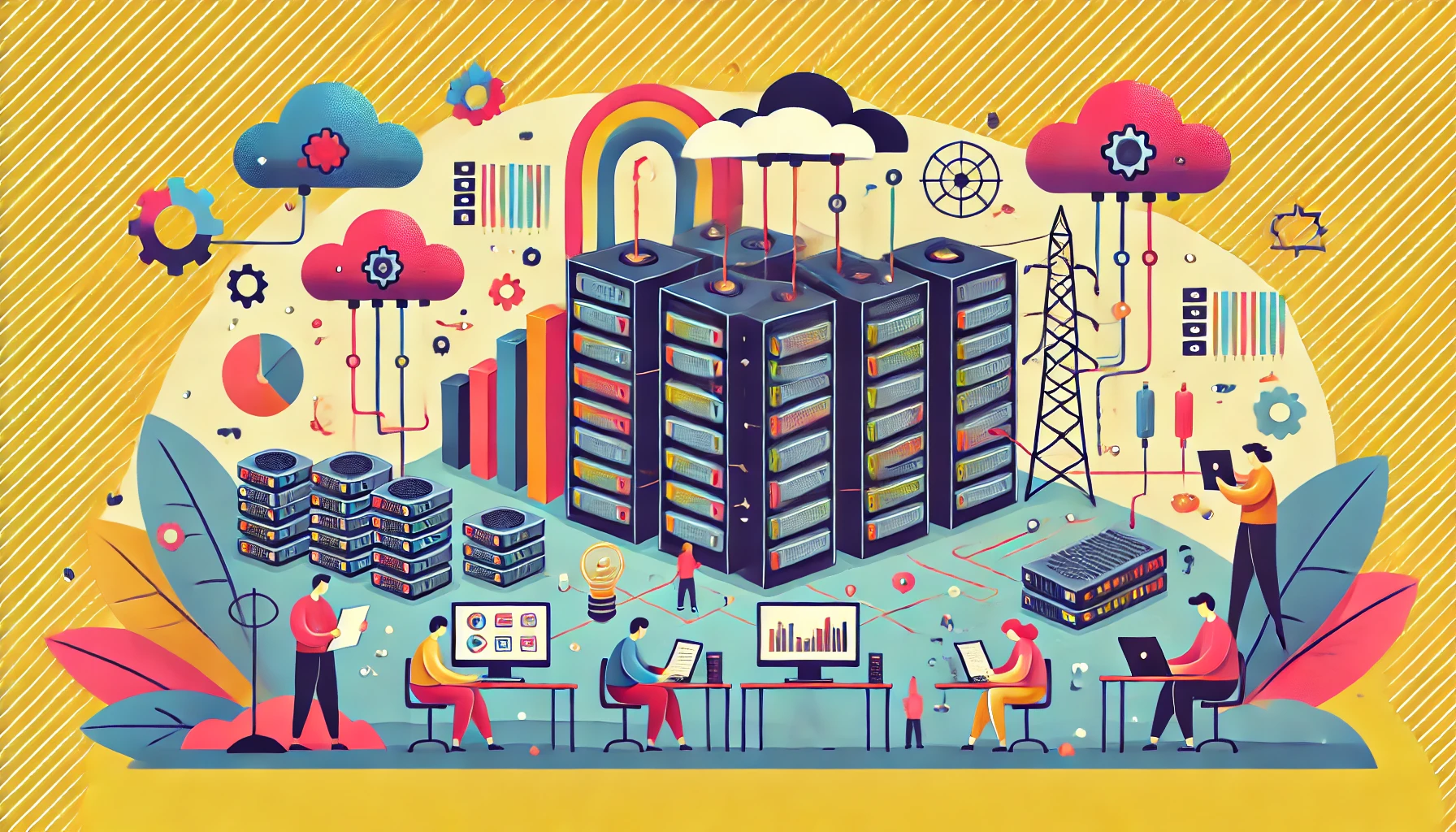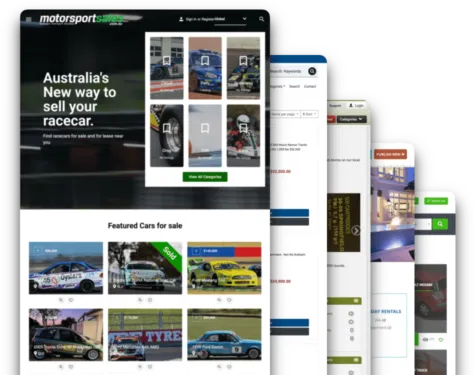Scaling an online marketplace can feel like climbing a mountain. It requires strategy, innovation, and resilience to say the least!

Today, we will explore the multifaceted challenges that arise when a platform grows beyond its initial user base.
From user trust to technical infrastructure, discover the hidden obstacles of marketplace expansion.
Table Of Contents
- Understanding The Complexities Of Marketplace Growth
- Challenges And Solutions In Logistics And User Experience
- Technical Infrastructure And Scalability
- Predicting Future Innovations And Strategies
- Conclusion

Understanding The Complexities Of Marketplace Growth
The excitement of launching an online marketplace often overshadows the intricacies involved in scaling it.

Adding more users is just the tip of the iceberg; you need to cultivate trust, maintain quality standards, and ensure a frictionless transaction process.
- Trust And Credibility: As your marketplace grows, you’ll likely encounter new challenges in establishing trust. Consumers become increasingly wary of scams and misinformation. Things such as emphasizing data transparency matters helps alleviate user concerns and fosters a healthy buyer-seller relationship.
- Diversified Services: Introducing various extra service packages can boost your platform's appeal. These might include premium listings, targeted advertising, or specialized seller tools.
- Sustainability Angle: Modern consumers increasingly value eco-friendly initiatives. Pursuing sustainability partnerships can broaden your market reach and position your brand as socially responsible.
- Localized Targeting: Whether you are expanding regionally or internationally, localized efforts like geo-targeted ads are critical. Users respond better to products that appear directly relevant to their locale.

Beyond these factors, marketplaces need well-defined policies to handle disputes, returns, and refunds effectively. Each additional layer of complexity can strain your existing resources, making scalability a well-planned endeavor rather than a quick expansion.
| Complexity | Description | Impact on Scaling |
|---|---|---|
| User Growth | Rapid addition of new buyers/sellers | Higher customer support & trust-building |
| Product Range | Diversifying listings to new categories | Complexity in quality control & moderation |
| Regulatory Concerns | International or regional compliance requirements | Possible legal hurdles & operational overheads |
Tip: Even in early stages, plan for compliance with payment regulations and data privacy to avoid costly migrations later.
Challenges And Solutions In Logistics And User Experience
One of the hallmarks of a thriving marketplace is seamless user experience.

Yet, achieving this at scale can be complex. From inventory management to payment options, every new layer of growth can introduce new bottlenecks.
Common Logistical Challenges
- Inventory Management: When sellers offer thousands of products, a lag in updating stock status can harm buyer confidence.
- Shipping And Fulfillment: Late deliveries and high shipping fees are primary reasons for cart abandonment. Streamlining fulfillment is critical.
- User Trust And Fraud Prevention: Larger user bases invite malicious actors. Employing spam prevention strategies and advanced verification helps keep fraud in check.

Key Solutions
- Automation And AI: Automated processes can handle order confirmations, refund requests, and tracking updates, reducing human error.
- Monetization Methods: Introducing a paid advertising model or subscription tiers provides additional revenue streams.
- Verified Profiles: Shifting to verified user profiles increases reliability and fosters trust between buyers and sellers.
- Strong Data Privacy Measures: Upgrading data protection measures ensures user information remains secure, which is pivotal for retaining users over the long term.
| Logistical Challenge | Recommended Solution | Potential Outcome |
|---|---|---|
| High Shipping Costs | Negotiated Shipping Contracts | Reduced costs & increased customer satisfaction |
| Fraudulent Sellers | Verification & Ratings System | Increased user trust & safer transactions |
| Unorganized Inventory | Automated Stock Management Software | Real-time updates & minimized overselling |
Tip: Segment logistics by region to handle localized shipping, taxes, and returns more efficiently.
Technical Infrastructure And Scalability
A marketplace is only as strong as its technical backbone.

Despite having a brilliant business model, if your servers frequently crash or your website lags, users will migrate to competitors.
Core Technical Hurdles
- Server Overload: Spikes in traffic during peak seasons or promotional events can cause site slowdowns.
- Security And Data Privacy: Handling user data, payment details, and internal analytics grows more complex as you scale. Incorporating a GDPR-compliant approach is essential, particularly if you operate in multiple countries.
- Search And Discovery: The bigger the inventory, the more refined the search functionality must be. AI-driven suggestions, advanced filters, and personalized recommendations become game-changers for user engagement.
- Modular Architecture: Transitioning from monolithic systems to microservices allows different parts of your marketplace (search, payment, user profiles) to scale independently.

Several successful platforms also apply lessons from niche marketplace transformations, where specialized communities have distinct technical requirements. By modularizing, you can deploy updates without disrupting the entire platform.
Tip: Consider cloud providers that offer auto-scaling options to handle sudden traffic surges without manual intervention.
Predicting Future Innovations And Strategies for Online Marketplace Growth
As online marketplaces evolve, staying ahead means anticipating shifts in user behavior and technology.

Whether it’s augmented reality previews for products or deeper social integrations, the competition will revolve around user engagement and retention.
Potential Innovations
- Subscription Models: A compelling approach to consistent revenue involves winning subscription models for sellers seeking specialized tools or for buyers wanting exclusive deals.
- Community-Driven Platforms: Instead of just listing products, some marketplaces aim for a social experience, akin to niche marketplaces turned communities, offering discussions, local events, and collaborative opportunities.
- Premium Upgrades: Providing premium memberships and advanced seller tools can elevate the user’s experience, translating to higher transaction volumes.

Evolving Strategies
- Data Insights: Utilizing machine learning to analyze purchase patterns allows for real-time adjustments in search algorithms or shipping methods.
- Sponsored Listings: Many platforms gain an extra revenue layer by using sponsored listing models that let sellers pay for better visibility.
- Social Commerce: Infusing social elements has proven beneficial for engagement and conversions. Some websites have started to integrate social commerce through user tagging, likes, and shares.

| Emerging Trend | Description | Potential Impact |
|---|---|---|
| Subscription Tiers | Tiered access for sellers & buyers | Recurring revenue & user loyalty |
| Community Features | Forums, user groups, localized events | Higher engagement & brand loyalty |
| AI Recommendations | Product suggestions & predictive modeling | Improved user satisfaction |
Tip: Continuously audit user feedback to refine your platform’s roadmap and implement features that resonate most with your core audience.
Conclusion
Scaling an online marketplace involves much more than merely attracting more users; it requires a holistic approach to logistics, user trust, and technical scalability.

With clear strategies around user verification, data protection, shipping optimizations, and flexible monetization, marketplaces can navigate the treacherous growth phases more smoothly.
Moreover, anticipating future trends—from community building to AR product previews—can position your platform as a market leader.
Looking to create an online marketplace? Contact us at Yclas.
Tip: Revisit your business strategy every quarter, updating your technology stack, monetization approach, and user engagement tactics to stay ahead.
Related Articles
- Building Trust In Digital Age
- How Value-Added Services Can Help
- Greening Your Marketplace
- Mastering Geo-Targeted Ads
- Monetizing Success With Paid Ads
- The Importance Of Verified Profiles
- Enhanced Data Privacy Controls
- Monetizing Success With Paid Ads
- Transform With Premium Memberships
- Sponsored Listings For Growth
Yclas Resources
Sources
- Statista, “E-commerce Market Trends,” 2022.
- Forbes, “Marketplace Monetization Models,” 2023.
Frequently Asked Questions
1. What Is the Biggest Obstacle When Scaling an Online Marketplace?
The most significant challenge often lies in maintaining user trust and platform reliability as the user base expands. If key elements like data security, payment processing, and customer support are not effectively managed at scale, users can lose faith, leading to churn and potential reputation damage.
2. How Can Verified User Profiles Help Build Trust?
Verified profiles act as a safeguard against fraudulent or low-quality listings, ensuring real individuals or businesses are behind each account. This added authenticity helps bolster buyer confidence and encourages more user engagement over time.
3. Why Are Data Privacy Controls So Important?
Data privacy measures reassure users that their personal and payment information is handled responsibly. Any breach in privacy can greatly undermine trust, making it crucial to adopt robust encryption, compliance policies, and ongoing security audits.
4. What Are Some Monetization Strategies Beyond Transaction Fees?
Many marketplaces explore subscription tiers, sponsored listings, and premium memberships to diversify revenue and reduce dependence on single streams. By providing extra perks or features, these models can attract power sellers and generate consistent income for the platform.
5. What Role Does Community Building Play in an Online Marketplace?
Community features like forums, user groups, and localized events can significantly enhance user engagement and loyalty. When buyers and sellers can interact and build relationships, the marketplace becomes more than just a transactional platform—it becomes a space for shared experiences and knowledge exchange.
6. Why Focus on Local Targeting When Scaling?
Local targeting uses location-based ads and listings to connect buyers with nearby sellers, reducing shipping costs and fostering a sense of community. This approach can also help marketplaces stand out in areas where global competitors lack localized presence or knowledge.
7. How Can AI-Driven Recommendations Improve the User Experience?
AI-based systems analyze user behaviors, purchase histories, and browsing patterns to tailor product suggestions. This personalization saves time for buyers by showing them relevant items faster, and it can also boost sales by matching sellers with the most interested audience.
8. What Are Some Common Shipping and Fulfillment Pitfalls?
Late deliveries, high shipping fees, and untracked packages are frequent issues that push buyers away. By integrating efficient fulfillment processes and partnering with reliable logistics providers, marketplaces can enhance customer satisfaction and repeat business.
9. How Do Premium Seller Memberships Benefit Both Sellers and the Platform?
Premium memberships give sellers advanced tools, higher listing visibility, and specialized customer support, making it easier for them to succeed. For the marketplace, these paid upgrades generate revenue and foster a motivated seller community with higher-quality offerings.
10. Why Is It Crucial to Anticipate Future Trends and Technologies?
Online marketplaces face fierce competition, and those that fail to evolve risk becoming obsolete. By monitoring technological advancements and user preferences, platforms can stay ahead, innovate with new features, and maintain a strong market position.

